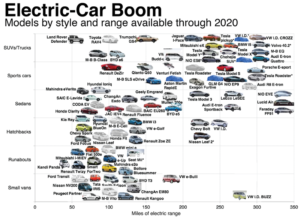Clean Energy Canada | Infographic: How the Clean Fuel Standard could work
November 8, 2017

1. The federal government is developing a Clean Fuel Standard. In short: it will make the fuels that heat our homes and power our cars cleaner. It’s also the single biggest carbon-fighting policy in Canada’s national climate plan, aiming to reduce carbon pollution by 30 million tonnes in 2030. That’s equal to taking more than seven million cars off the road.
2. As the market for renewable fuels grows more competitive, we’ll see more jobs and investment in the sector. There are already 26 biofuel plants across Canada. The standard could add 30 more plants, 31,000 jobs and $5.6 billion in economic activity in clean fuels.
3. Fuel suppliers, like refiners and natural gas providers, would meet the Clean Fuel Standard in the way they find most cost-effective. This keeps prices competitive while also creating more demand for ethanol, biodiesel, clean electricity and renewable natural gas.
4. The standard will apply to gasoline and diesel in cars, as well as natural gas, coal and other fuels used in buildings and industries across Canada. We recommend separating the transportation sector from the building and industry sectors, so that each can be targeted more effectively.
5. The Clean Fuel Standard is an affordable way to fight climate change and make Canada’s economy cleaner. Even with the standard in place, with the help of energy efficiency measures, a typical Canadian household would save $17 a month on their energy bills in 2030 compared to what they spend today.
For more on the Clean Fuel Standard, read What a Clean Fuel Standard Can Do for Canada.